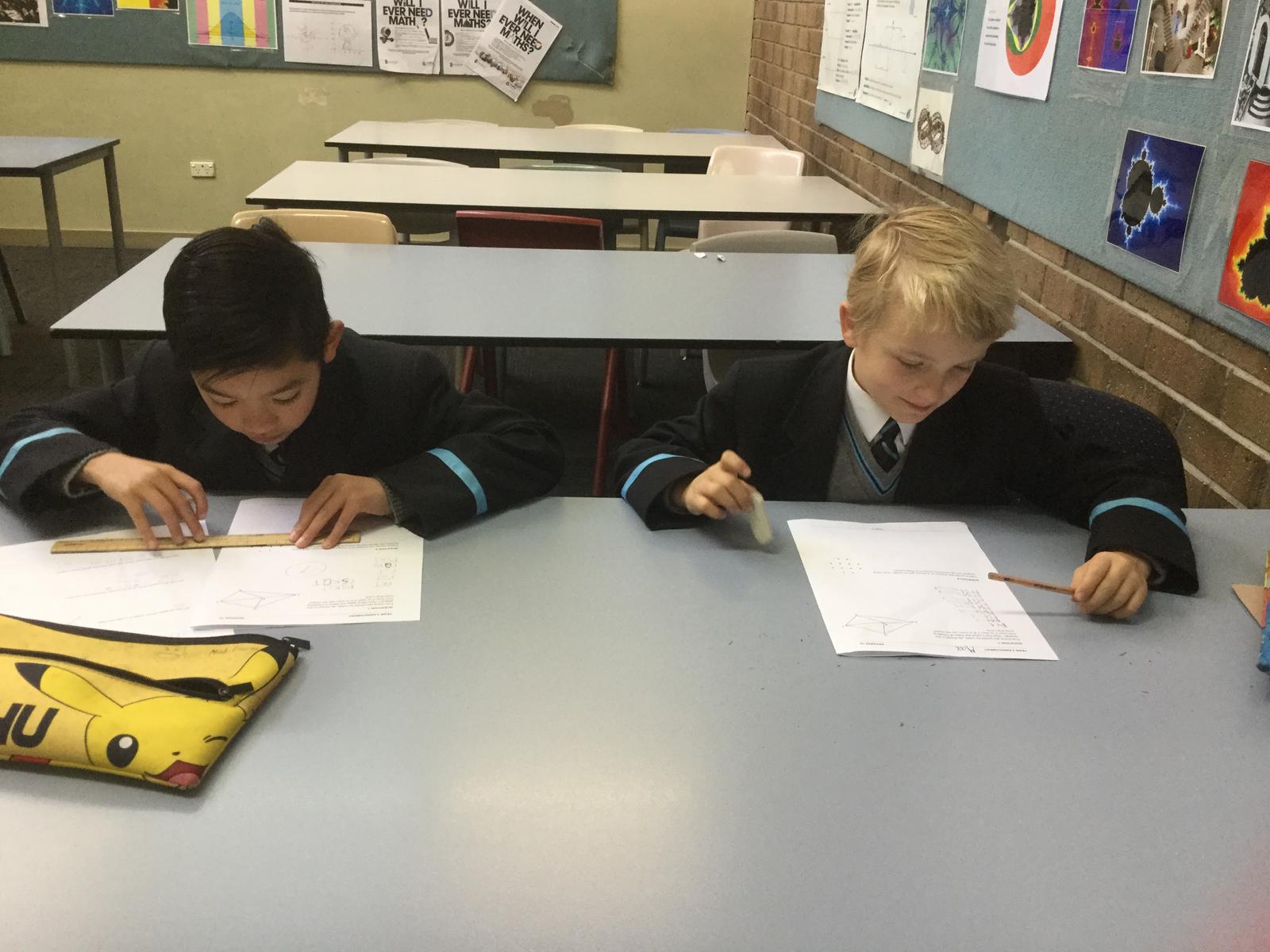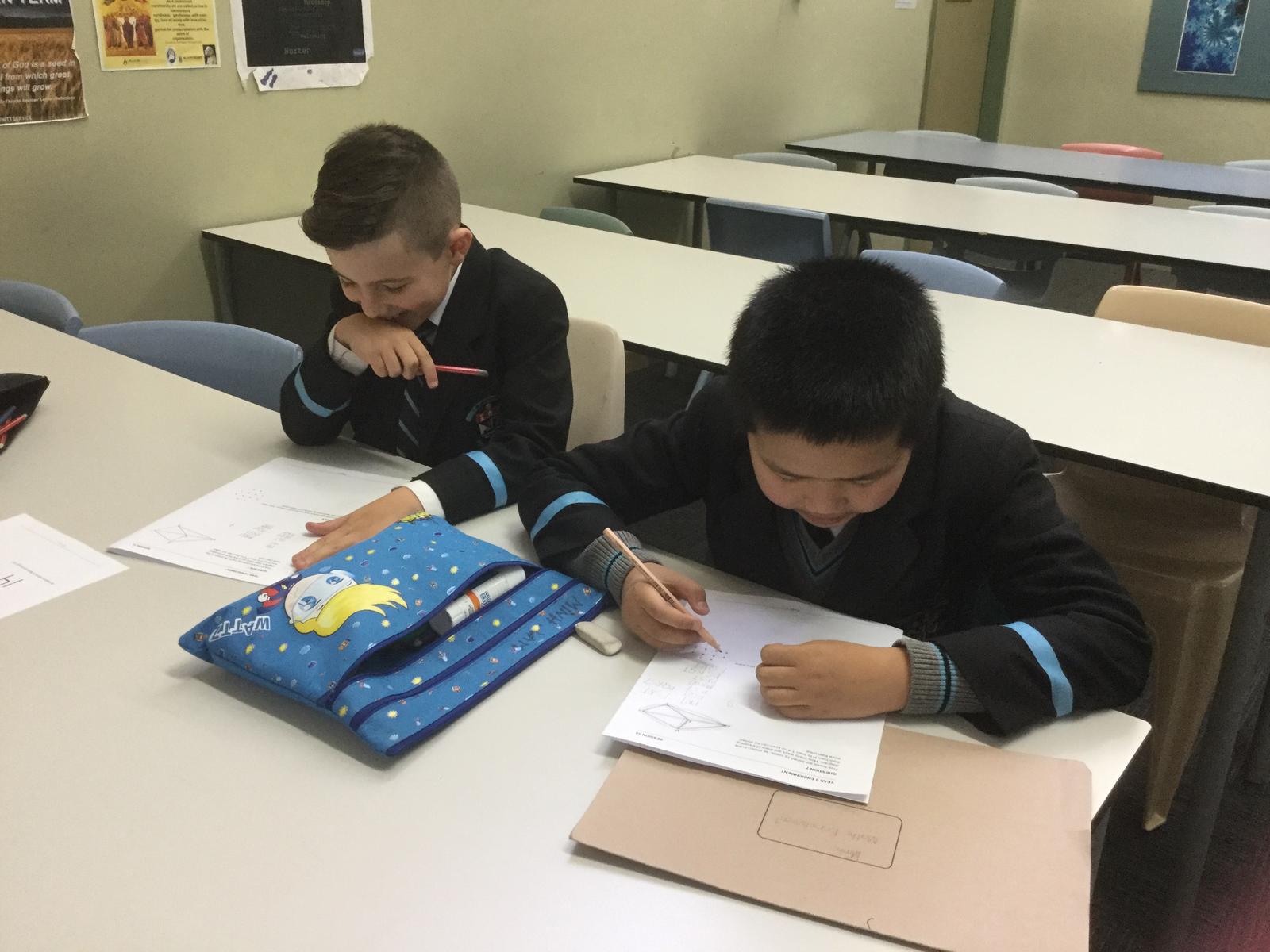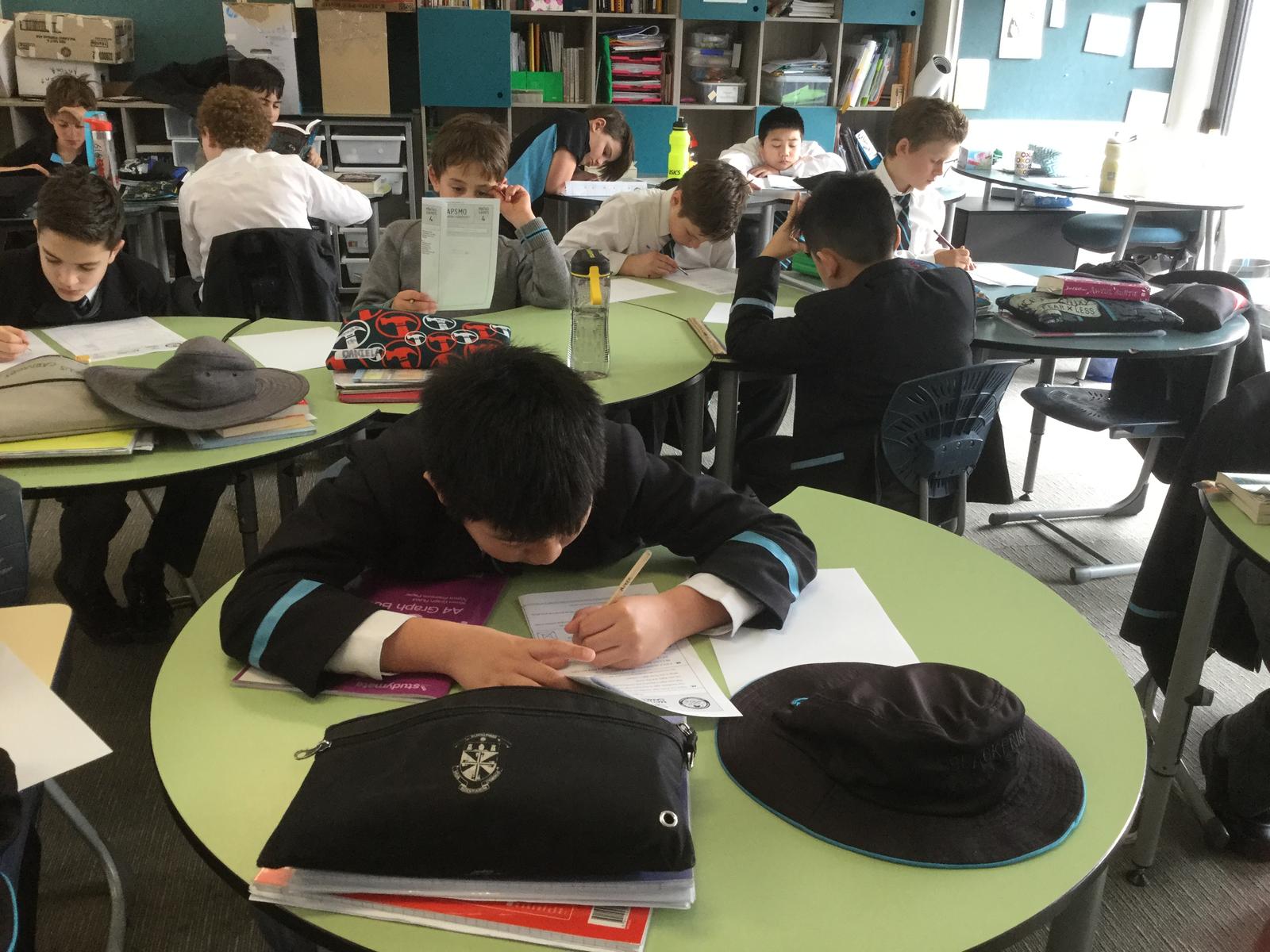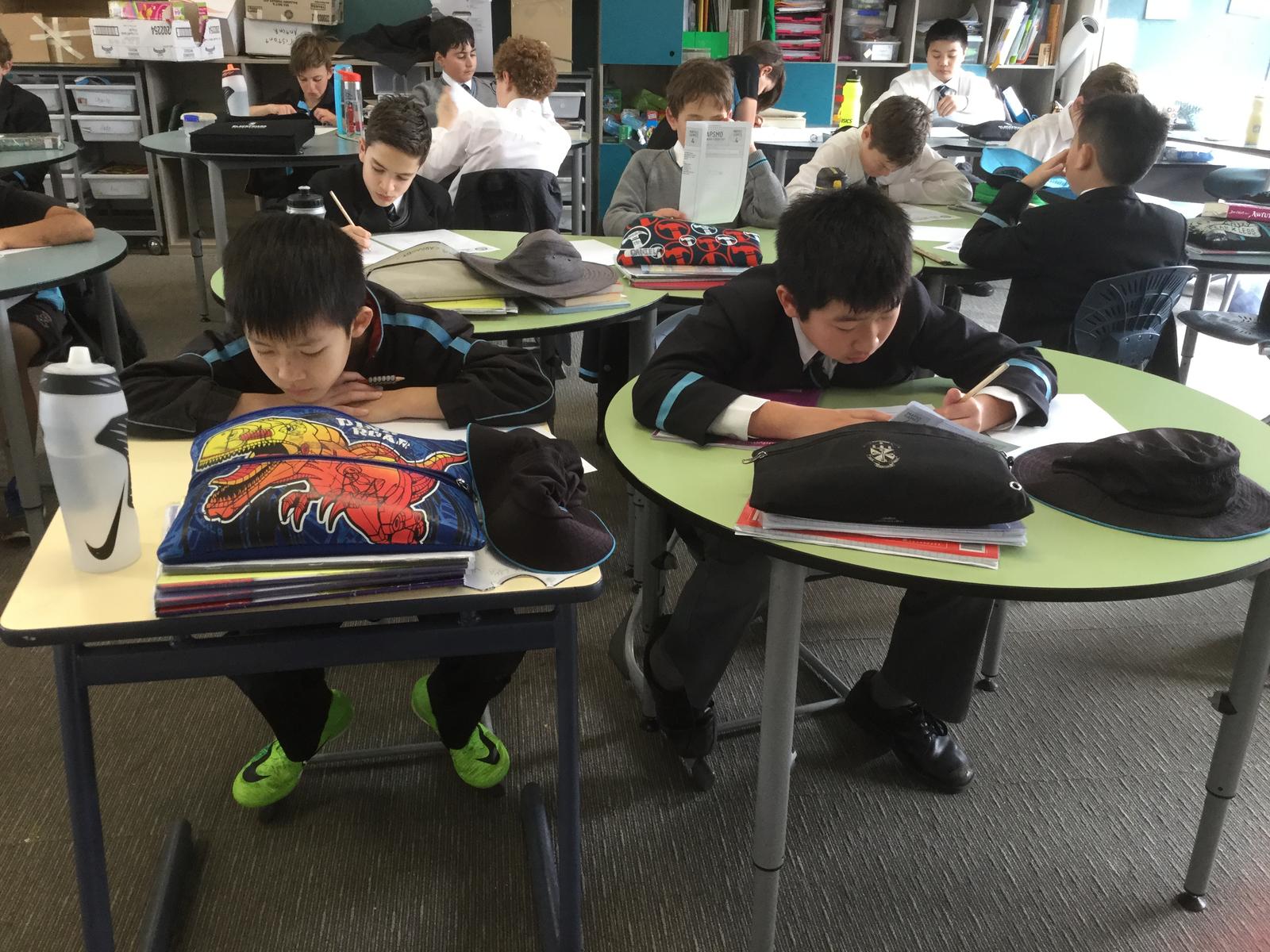Primary Maths Enrichment
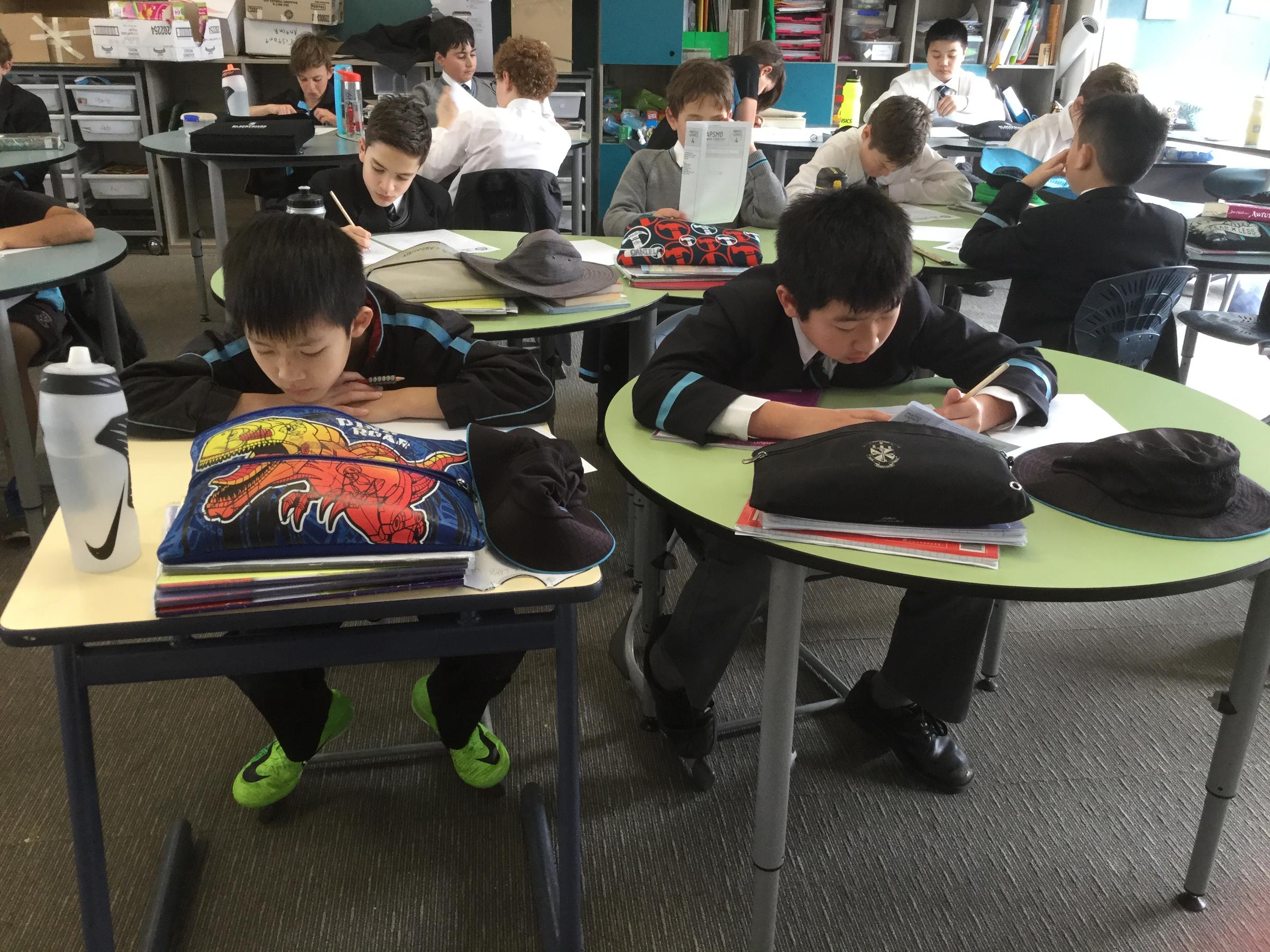
Primary Maths Enrichment
Each week I work with selected students across Years 3 to 6 doing Maths enrichment. If you wonder what that means, my aim is to show, through problem solving, how to think mathematically. The boys are exposed to a very wide range of problems, often set in a theme of Measurement or Geometry etc.
However, depending on the year level, after the boys have had a “play” and produced a result, we discuss our answers and then look at how we may have been able to better structure our thinking to arrive at an answer more quickly. Sometimes they guess and are successful, and I will ask them how they know it is the only answer? That then requires further play and discussion. The work we do together is challenging and requires them to think more deeply and logically, but I am happy to see they are learning from the experience and often use these newly acquired strategies in later problems. Their success in Mathematics competitions provided throughout the year shows the improved mathematical thinking they are demonstrating and is a credit to the boys.
Here is one of the questions that Year 3 students shown were working on last week.
Twelve points are marked on a square grid as shown. How many squares can be formed by joining 4 of these points?
The obvious answer was 5, but there were more!
Here is a question that Year 6 enrichment students have looked at, and discussed how to arrive at an answer.
Three water pipes are used to fill a swimming pool. The first pipe alone takes 8 hours to fill the pool, the second pipe alone takes 12 hours to fill the pool, and the third pipe alone takes 24 hours to fill the pool. If all three pipes are opened at the same time, how long will it take to fill the pool?
During Terms 2 and 3 there is a series of 5 Mathematics contests based around problem solving designed for all students in Year 5, called the Maths Games. In preparation for these I work alternate weeks with each Year 5 class on materials to prepare them for these contests. It allows students to see and discuss problem solving strategies to use. The boys are given a chance to “play” with the problems individually or discuss it within a group. As a class, we then see whether there is a more efficient way to solve this sort of problem. The competitions consist of 5 questions given in a particular week each month. The photos show the boys busy working on the most recent contest.
Here are 2 of the questions from their last contest.
This first question was a chance to look at logic puzzles as a strategy to solve the problem.
Peter, Quinn, Rob and Stephen are all different ages; 9, 10, 11 and 12.
Peter is older than both Rob and Stephen. Quinn is two years younger than Rob. How old is Stephen?
The second question works their spatial awareness in a Geometry style question.
How many triangles, of any size, can be found in this diagram?
Miss Valerie Frost
Mathematics Curriculum Leader

